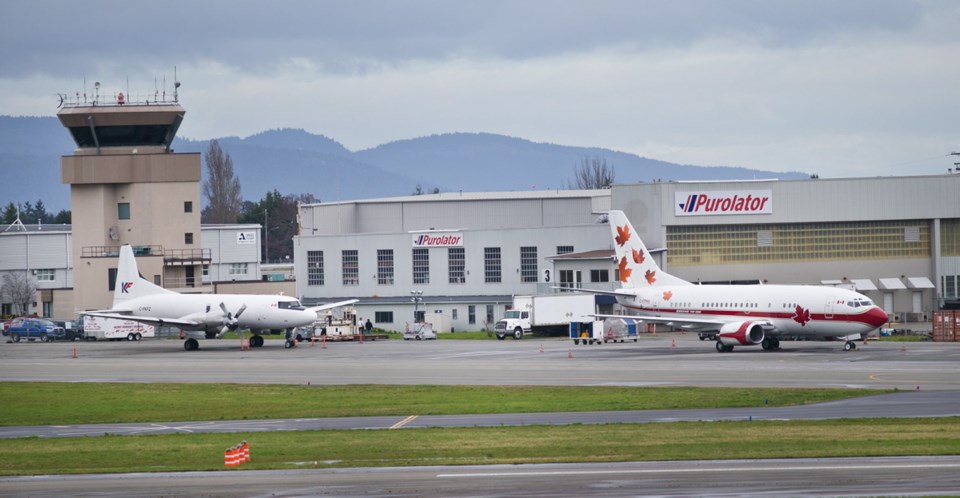Efforts to reduce emissions have vaulted the Victoria Airport Authority to the second level of Airport Carbon Accreditation from the Airports Council International.
Victoria International Airport reached Level 1 by mapping carbon emissions and understanding where improvements could be made to reduce those emissions.
To reach Level 2, the airport demonstrated those efforts resulted in a reduction in carbon footprint by 14.4 per cent from the initial 2013 baseline year.
Since then, the airport has gone to work establishing solar and geothermal power installations, controlled ventilation systems to reduce wasted energy, replaced hot water boilers with new efficient models, installed LED lighting, developed a carbon management plan and installed new building automation systems that continually monitor building performance and energy consumption.
“Victoria Airport Authority is committed to reducing our impact on the environment and reducing our carbon emissions,” said chief executive Geoff Dickson. “Achieving the next level accreditation not only demonstrates our commitment to sustainability, but encourages us to continue this important work.”
There are four levels to the Airport Carbon Accreditation Program: mapping, reduction, optimization and neutrality.
Level 3 certification involves optimization of carbon dioxide reduction and requires third- party engagement to identify emissions that are not directly under airport control, but have an impact on the airport.
Ferries keeping eye on killer whales
New thermal-imaging cameras at B.C. Ferries’ Sturdies Bay terminal on Galiano Island are giving scientists a better look at whales as they pass by.
The cameras, active around-the-clock for a year-long pilot project, should help improve the overall detection of whales in the Salish Sea, even at night.
“As a stakeholder in the Salish Sea, B.C. Ferries has a responsibility to understand how our activities may affect marine mammals and the southern resident killer whales in particular,” said CEO Mark Collins. “Our deck crews are always on the lookout for marine mammals, and we voluntarily report sightings to the B.C. Cetacean Sightings Network to help researchers gather information.”
The project is being funded mainly by Fisheries and Oceans Canada and being done in collaboration with the University of Erlangen in Germany and Woods Hole Oceanographic Institution in Massachusetts.
Thermal imaging cameras are also in place near the international shipping lane in Boundary Pass, which separates the Southern Gulf Islands from the San Juan Islands.
If the project is successful, the system could be used to alert ships to the presence of marine mammals in narrow waterways, and identify high-risk areas so mariners can make real-time decisions to slow down or use avoidance tactics.
Barbara Sutton joins Conservatory
The Victoria Conservatory of Music has appointed Barbara Sutton as chief development officer. Sutton’s fundraising experience spans more than 20 years, most recently as director of external relations at St. Margaret’s School. She has also held senior development positions at the Royal Conservatory of Music in Toronto, University College London in the U.K., York University and University of Toronto. She holds a bachelor’s degree, a certificate in fundraising management and has been certified as a fundraising executive since 2004.
“We feel very privileged that she is joining the VCM as her new professional home,”said Jane Butler McGregor, CEO, Victoria Conservatory of Music.



